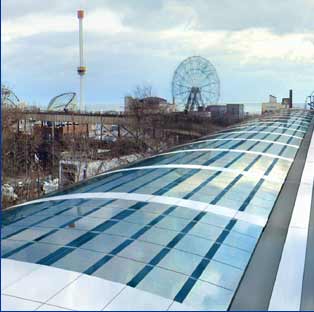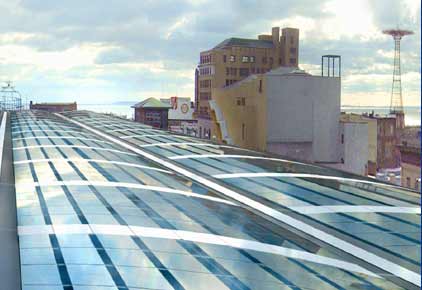





When the little trains of Charles Gunther's Brooklyn, Bath & Coney Island Railroad first crossed the Gravesend marshes to reach Coney Island on June 8, 1864, visitors found a typically sunny Long Island barrier beach, home to dunes, beach plums nd rabbits. To be sure, it wasn't completely deserted; nearly four decades earlier a shell road was built, and Coney's first resort hotel, the Coney Island House, opened its doors for business. Additional establishments opened in the intervening years to serve those willing to make the long trek or, more typically, boat trip, to sample sand, sea, surf, clams, beer, and other pleasures away
from the crowding and heat of New York City.
The location where Gunther's road made
beachfall came to be known as the West End, and his colorful
line became known as the
West End Line, a name formalized after reorganization, when
"West End" replaced "Coney Island" in the
line's title.
The West End Line enabled the first
all-rail trip from Brooklyn City, which then encompassed only
the portion of the modern borough closest to New York across
the East River, by connecting to horse cars at the City Line at
25th Street and 5th Avenue.
This was not an ideal journey, and in the late 1870s there was a veritable boom of steam railways, each seeking another way to bring beachgoers to the sea and relieve them of a portion of their funds in ticket sales before it was all spent on refreshments, hotel rooms and Three-Card Monte dealers.
Of these new lines, three are of particular importance to our story. They were the New York & Sea Beach Railway (the Sea Beach Line), Andrew Culver's Prospect Park & Coney Island Railroad (the Culver Line) , and the Brooklyn, Flatbush & Coney Island Railway (the Brighton Beach Line).
©2003 The Composing Stack Inc.
©2003 Paul Matus
Updated May 1, 2003